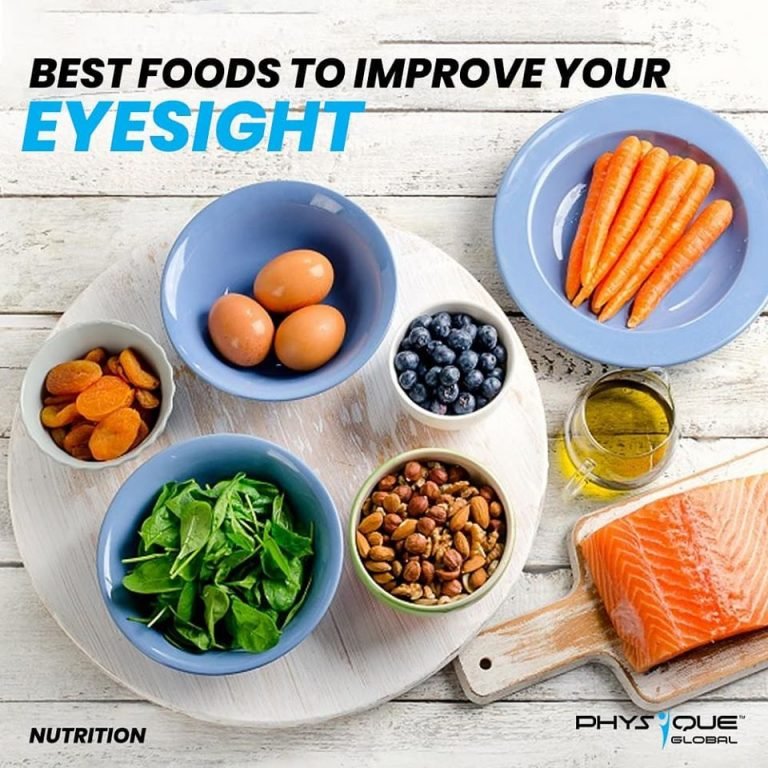Our modern lifestyle, characterized by excessive screen time and exposure to artificial lighting, necessitates a closer examination of eye health. The adage “you are what you eat” extends to ocular wellness, and the interplay of various nutrients holds the key to preserving and enhancing eyesight. Discover the delightful food combinations that may ameliorate vision and invigorate your retinas, inviting the reader to explore a vibrant spectrum of flavors while nurturing their visual faculties.
Understanding the Nutrients Essential for Vision
The first step in elevating one’s dietary approach to eye health lies in comprehending the pivotal nutrients. Key players include antioxidants, vitamins, and minerals that govern various ocular functions. Central to this discussion are vitamins A, C, and E, along with the mineral zinc and the fatty acids known as omega-3s.
Vitamin A is synonymous with good vision; it aids in the formation of rhodopsin, a pigment found in the retina that is crucial for low-light and color vision. A plethora of studies corroborate that sufficient vitamin A intake results in a significant reduction in the risk of age-related macular degeneration (AMD). To maximize vitamin A, consider combining carrots—rich in beta-carotene—with avocado, which enhances the absorption of this essential nutrient due to its healthy fats.
Vitamin C, an eminent antioxidant, plays a prominent role in ocular health by combating oxidative stress. Citrus fruits, strawberries, and bell peppers are fantastic sources. A compelling combination would involve a refreshing citrus salad enhanced with spinach, as the green leaves provide lutein and zeaxanthin—two crucial carotenoids that accumulate in the retina and protect against harmful blue light exposure.
Vitamin E contributes to cellular health and protective mechanisms, playing a role in preventing cataracts. Almonds are an opulent source, but when married with sunflower seeds, not only can one enjoy a granola mix, but also cultivate a rich source of both vitamins. Zinc, often overlooked, is found in abundance in shellfish and legumes and helps in the conversion of vitamin A into a usable form, thereby augmenting night vision.
Incorporating Omega-3s for Healthy Retinas
Modern diets can frequently lack adequate omega-3 fatty acids, particularly DHA (docosahexaenoic acid) and EPA (eicosapentaenoic acid), which are vital for maintaining the structural integrity of retinal cells. Clinical studies have indicated that omega-3s may deter dry eye syndrome and reduce the risk of AMD. Anchovies, sardines, and flaxseeds are superb sources. A delectable combination could be a healthful sweet potato and flaxseed pudding that not only nourishes but tantalizes the palate.
Colorful Combinations that Benefit Eye Health
One of the joys of dietary change is the sheer vibrancy of color one can incorporate into meals. Certain colors denote specific phytochemicals that confer health benefits. While green foods, such as kale and broccoli, are abundant in lutein and zeaxanthin, deep-colored foods, like blueberries and purple carrots, contribute additional antioxidants.
Imagine a stir-fry featuring brightly colored bell peppers, carrots, and purple cabbage sautéed in olive oil. This combination not only stimulates taste buds but also synergistically benefits visual health. Furthermore, the olive oil base aids in nutrient absorption while providing heart-healthy fats.
Playing With Spice: Turmeric’s Role in Eye Health
Spices are more than just flavor enhancers; they possess remarkable health-promoting properties. Turmeric, containing curcumin, exhibits potent anti-inflammatory and antioxidant effects that may guard against cataracts. Incorporating turmeric into a lentil stew, paired with spinach and tomatoes, can produce a hearty meal inexplicably linked to ocular benefits due to the multitude of complementary nutrients present.
Delicious Dinners: The Power of Combinations
Perhaps envisioning a delightful dinner can invigorate the approach to nutrient-dense eating. A possible meal could feature salmon—rich in omega-3s—served alongside quinoa, decorated with parsley and a lemon-walnut vinaigrette. This illustrious combination brings omega-3s, plant-based proteins, and vitamin C together, providing a comprehensive nutritional profile. Notably, the walnuts amplify omega-3s and add a satisfying crunch.
Moreover, consider an eye-healthy taco night. Use corn tortillas as the base—corn is high in lutein—and fill them with black beans, sweet potatoes, and a medley of colorful vegetables. Top with avocado and a drizzle of lime juice for a delicious yet visually nutrient-dense meal.
Encouraging Mindful Eating Practices
Engaging in mindful eating practices can augment the benefits of food combinations for better eyesight. Chewing slowly, appreciating the flavor nuances, and focusing on the meal can lead to enhanced digestion and nutrient absorption. Inculcating this practice can facilitate a holistic approach to dietary consumption, reinforcing eye health while also promoting general well-being.
Wrapping Up: The Visual Feast Awaits
The journey toward improving eyesight through dietary adjustments offers an inviting challenge to embark upon. It necessitates a foray into colorful, vibrant foods that not only satiate hunger but also furnish the body with essential nutrients. A broad spectrum of combinations can be explored, from salads bursting with vitamins to stews loaded with spices that enliven the palate.
Flourishing ocular health inexorably intertwines with consuming nourishing fare that invigorates the visual system. The call to action is clear: indulge in thoughtful food pairings and foster an appreciation for the contribution of these selections to better eyesight. Adopting a more wholesome diet is not merely an alteration of food but an investment in oneself and the quality of vision for years to come.
